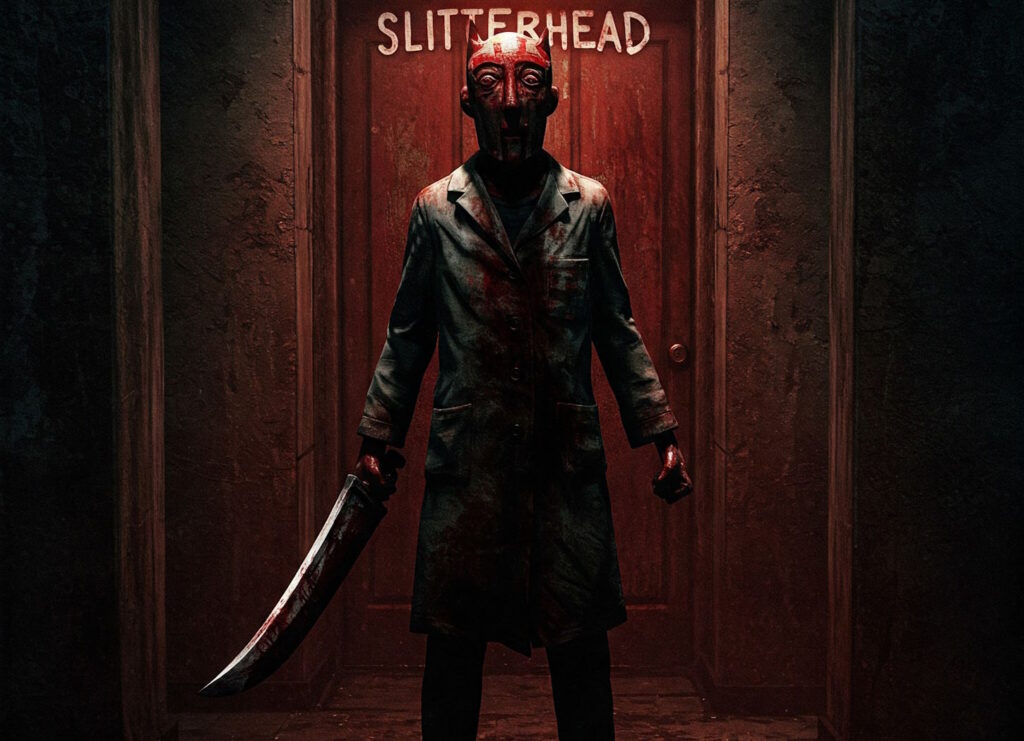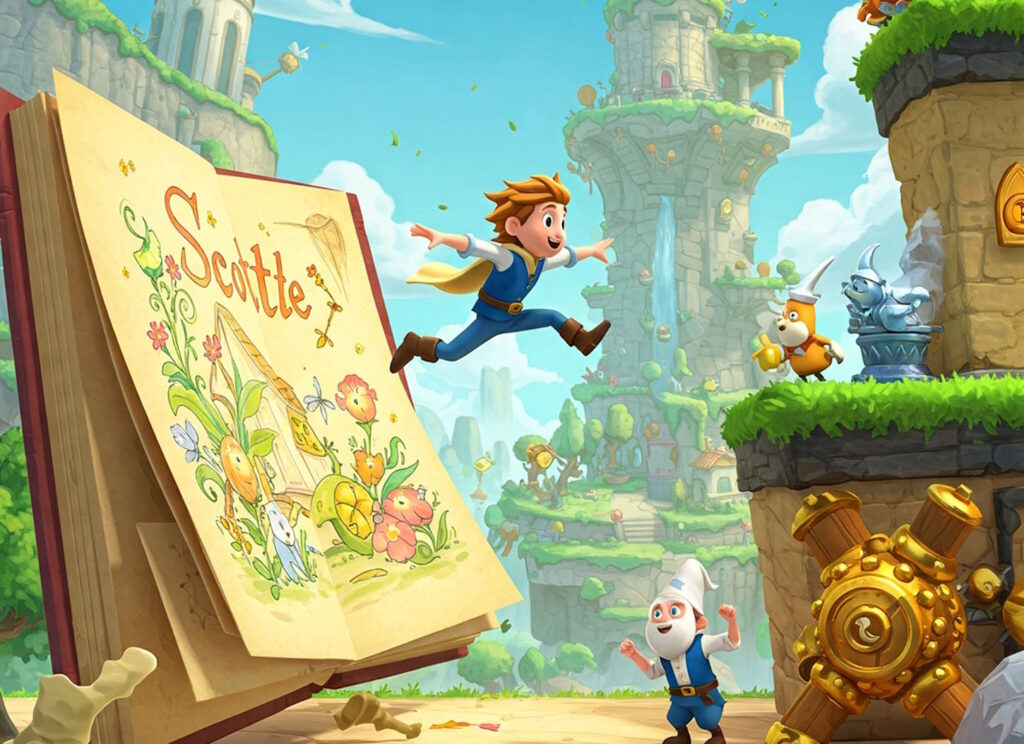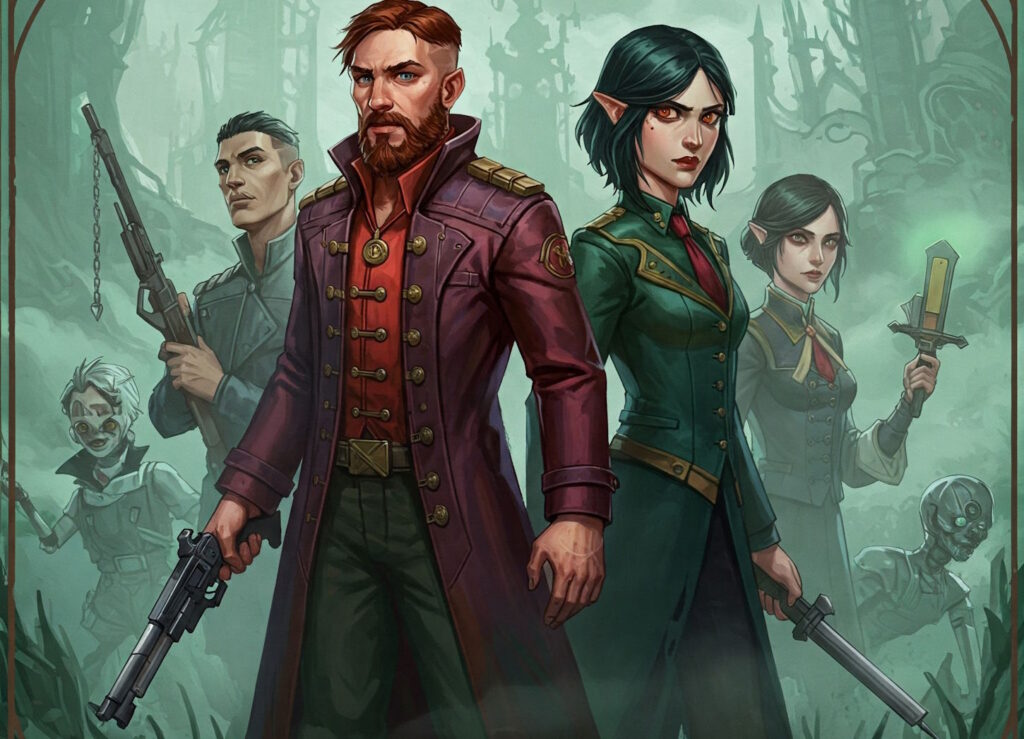Introduction to Slitterhead
Slitterhead marks an exciting new chapter in the horror genre, crafted by renowned game developer Keiichiro Toyama, who is famously known for his groundbreaking work on the Silent Hill series. This upcoming title is capturing the attention of both fans and newcomers alike, as it promises to deliver a fresh yet familiar experience that invokes the atmospheric dread and psychological tension that defined its predecessor.
At its core, Slitterhead delves into a horrifyingly imaginative world, set in a contemporary urban landscape influenced by the nightmares that Toyama brilliantly created in his earlier titles. Players can expect to navigate through a chilling narrative filled with grotesque entities that emerge from the darkest corners of the human psyche. The game weaves elements of folklore and urban legends into its storyline, crafting a rich tapestry of horror that will engage and terrify players.
Drawing inspiration from both Japanese horror and Toyama’s personal experiences, Slitterhead seeks to balance mystique and visceral fear. It aims to connect with the audience on an emotional level while providing heart-pounding gameplay. The vision for Slitterhead is not only to instill fear but to explore deeper themes of human nature and existential dread, reminiscent of the potent storytelling that fans cherished in Silent Hill.
The anticipation surrounding Slitterhead is palpable, as many are eager to witness how Toyama redefines horror gaming. The unique blend of striking visuals, immersive gameplay mechanics, and thought-provoking narratives is poised to make Slitterhead a significant competitor in the realm of horror titles. As we await its release, the intrigue generated by Toyama’s return to the genre promises to cultivate a renewed interest in horror gaming, reminiscent of the impact Silent Hill had on the industry when it first debuted.
The Creative Mind Behind Slitterhead
Keiichiro Toyama is a prominent figure in the horror genre, primarily known for his groundbreaking work on the acclaimed series Silent Hill. With a career spanning over two decades, Toyama’s influence on video game design is profound, particularly in how he blends narrative and gameplay to create an immersive horror experience. His journey began at Konami, where he initially worked as an artist. However, his vision for a deeper, more atmospheric horror experience eventually led him to helm the Silent Hill project.
Silent Hill was not just a game; it was a cultural phenomenon that redefined psychological horror in digital form. Toyama’s approach focused on evoking fear through atmosphere rather than sheer shock value. He emphasized the significance of sound design, visual storytelling, and the complex emotional landscapes of characters, all of which contributed to the unsettling ambiance that became synonymous with the series. This methodology laid the groundwork for what players can expect from his latest endeavor, Slitterhead.
After his tenure at Konami, Toyama founded Bokeh Game Studio, where he could explore new creative directions. This shift allowed him to employ his unique philosophy on horror game design without constraints, paving the way for Slitterhead. Drawing from personal experiences and his distinctive understanding of fear, he aims to craft a narrative that not only chills players but also engages them on a psychological level. The metaphysical themes intertwined in the gameplay indicate a return to form for Toyama, inviting fans to once again delve into the aspects of fear that resonate with the human experience.
In crafting Slitterhead, Toyama appears determined to honor the legacy of his past while simultaneously venturing into unexplored territories. His contributions to the horror genre remain significant, and Slitterhead stands as a testament to his enduring influence and creative evolution.
Gameplay Mechanics and Features
Slitterhead introduces an innovative gameplay experience that melds action with elements of psychological horror, ensuring that players engage in both challenging combat and an immersive narrative. Central to its mechanics is a fluid combat system that emphasizes both offense and defense. Players can anticipate enemy movements and adapt their strategies accordingly, utilizing a variety of weapons and techniques that range from melee attacks to firearms. This flexibility allows for diverse playstyles, catering to both aggressive and strategic players.
Exploration is another critical aspect of Slitterhead, featuring a richly detailed, open-world environment imbued with a sense of dread and mystery. As players navigate through the haunting landscapes, they will encounter various puzzles and hidden items that enhance the lore of the game. This exploration not only serves to unravel the story but also challenges players to immerse themselves in the eerie atmosphere, pushing the boundaries of their psychological endurance.
What sets Slitterhead apart in the horror genre are its unique horror elements, which breathe life into the psychological terror that the creator of Silent Hill is renowned for. While there are traditional jump scares, the game thoughtfully incorporates tension-building techniques that keep players on edge. The atmosphere is enhanced by ambient sounds and unsettling visuals that draw players into a nightmarish reality where the line between sanity and madness blurs.
The balance of action and psychological horror is masterfully executed, ensuring that moments of intense combat are interspersed with periods of chilling exploration. This dynamic encourages players to engage deeply with the narrative while remaining vigilant against the looming threats within the game. The careful design of Slitterhead’s gameplay mechanics not only redefines horror gameplay but also reinforces the emotional stakes embedded in its chilling storyline.
Art and Atmosphere: A Visual Journey
The upcoming game Slitterhead, developed by the creator of the renowned Silent Hill franchise, brings forth an impressive visual presentation that is expected to engage players deeply through its art style and atmosphere. Every element of the game’s design has been carefully crafted to evoke a sense of dread and unease, paralleling the iconic visuals that have become synonymous with horror games. The character designs are particularly notable, embodying a surreal yet unsettling appearance that is reflective of the inner turmoil and psychological depths that players are likely to explore.
Nature, a central theme within Slitterhead’s world, is portrayed through richly textured environments that draw players into an immersive landscape. The juxtaposition of beauty and horror is prevalent; lush foliage and sprawling urban decay coexist, creating an unnerving yet captivating aesthetic. By utilizing advanced graphics technology, the developers emphasize atmospheric details, such as shadows that loom ominously and light that pierces through darkness, enhancing the overall tension and fear. This meticulous attention to environmental aesthetics ensures that players are not only observers but active participants in their haunting journey.
The atmosphere in Slitterhead is further amplified by dynamic sound design and scores, complementing the vivid visuals. Every sound, from distant whispers to unsettling ambient noises, serves to heighten player anxiety, reminiscent of the skillful soundscapes in Silent Hill. As players navigate through the eerily beautiful settings, they are enveloped in an interactive experience that transcends traditional gameplay, pushing the boundaries of horror storytelling.
Ultimately, the graphical elements, character designs, and overall atmosphere of Slitterhead converge to create a horrifying yet artistically profound experience. This synergy is anticipated to resonate with fans of the genre, establishing a new standard for horror visuals in gaming.
Narrative and Storytelling Techniques
Slitterhead, developed by the creator of Silent Hill, employs a rich narrative structure that intertwines themes of fear, isolation, and psychological torment. The game unfolds in a meticulously crafted world, immersing players in a chilling environment that evokes a sense of dread reminiscent of the iconic Silent Hill series. At its core, the story revolves around the struggle of characters facing inner demons, as well as external threats that manifest from their fears.
This narrative depth is achieved through multi-dimensional character development. Players are introduced to protagonists who are not merely defined by their actions but are complex beings shaped by past traumas and personal experiences. The storytelling technique often interlaces the backstory with present-day events, allowing players to unravel character motives and emotional scars. Such an approach cultivates a profound emotional engagement, drawing players into the characters’ plights, thereby enhancing the horror experience.
The use of environmental storytelling plays a critical role in building the overarching narrative of Slitterhead. Clues embedded within the surroundings reveal fragments of the story, encouraging players to piece together the larger narrative tapestry. This technique not only promotes exploration but also heightens suspense, as the environment often reflects the psychological states of the characters. This connection between setting and character enhances the player’s immersion in the world, adding layers to the overarching theme of fear.
Moreover, Slitterhead utilizes innovative gameplay mechanics to deepen the storytelling experience. Puzzles and challenges are intricately tied to the narrative, compelling players to engage with the story actively rather than passively consuming it. This interactive component serves to elevate the horror elements, as players are often confronted with their anxieties and fears through gameplay. Ultimately, the narrative and storytelling techniques in Slitterhead reflect a commitment to crafting a profound horror experience that resonates with players on multiple levels.
Comparing Slitterhead with Silent Hill
As fans eagerly anticipate the release of Slitterhead, it is essential to draw comparisons with the notable Silent Hill franchise, which has profoundly influenced the survival horror genre. Both games are crafted by the visionary creator Keiichiro Toyama, establishing a familial lineage in their thematic exploration of psychological horror. However, while they share common themes, substantial differences set them apart in terms of gameplay mechanics and narrative structure.
One significant similarity between Slitterhead and Silent Hill lies in their focus on psychological horror and the exploration of human psyche. The Silent Hill series often delves into the experiences of trauma, guilt, and personal demons, creating an unsettling atmosphere by distorting reality. Similarly, Slitterhead appears to embrace this tradition, offering a deep narrative that requires immersion in the character’s fears and emotional struggles. Moreover, both games utilize their environments effectively to augment the horror experience—Silent Hill through its fog-laden streets and Slitterhead through its urban landscapes teeming with eerie transformations.
In terms of gameplay features, there are notable distinctions. Silent Hill has traditionally featured a fixed camera perspective, adding a layer of unpredictability and fear as players navigate dark and claustrophobic settings. In contrast, Slitterhead is anticipated to adopt modern gaming mechanics, allowing for fluid camera movements and a more dynamic gameplay experience. This shift may enable players to engage more directly with the game’s terrifying elements, offering fresh scares while maintaining the franchise’s core horror ethos.
Overall, while Slitterhead is built upon the foundation laid by Silent Hill, it aims to carve its own identity within the survival horror genre. By blending traditional psychological horror themes with innovative gameplay, Slitterhead presents an exciting new chapter for fans and newcomers alike. The upcoming title promises to evoke distress and fear, potentially affirming Toyama’s enduring legacy in game development while exploring new depths of terror.
Community Reception and Expectations
The announcement of Slitterhead, developed by the creator of Silent Hill, has ignited a wave of enthusiasm and anticipation among the gaming community. Reactions have been diverse, reflecting both excitement and a critical lens through which many fans are analyzing the game’s potential. As trailers and promotional materials have started to surface, forums and social media platforms have buzzed with discussions exploring the thematic depth and gameplay mechanics that Slitterhead promises to offer.
Fans of the horror genre have been particularly vocal, drawing comparisons to the iconic Silent Hill series. The unique blend of psychological horror and unsettling atmospheres that they have come to expect seems to be a central focus in the discussions surrounding Slitterhead. Many players have voiced their hopes for a rich narrative that explores human emotions and fears, reminiscent of earlier works by the creator. These discussions often center on the desire for a thought-provoking story woven seamlessly with immersive gameplay that deviates from typical horror tropes.
Speculation regarding the game’s setting, character development, and overarching storyline continues to thrive within the community. Fan theories have emerged, suggesting potential links between Slitterhead and previous horror titles, invoking nostalgia while also encouraging curiosity about fresh experiences. However, concerns regarding the expectations set by such a legendary creator are also prevalent. Some community members express apprehension, fearing that high expectations may overshadow the game’s merits and lead to disappointment upon release.
Overall, the responses to Slitterhead signify a robust blend of excitement and cautious optimism. As the gaming community eagerly awaits further announcements, it is evident that Slitterhead holds the potential to redefine its place in horror gaming, building upon the legacy established by Silent Hill. Conversations and theories will likely evolve as the game’s launch approaches, shaping the community’s perception of this new chapter in horror gaming.
Potential Impact on the Horror Genre
The release of Slitterhead marks a significant moment in the horror gaming landscape, primarily due to its origins and the pedigree of its creator, Keiichiro Toyama, who is renowned for his work on the illustrious Silent Hill series. The arrival of this title is poised to influence not only its contemporaries but also the overall trajectory of horror games. As players become increasingly discerning, game developers must innovate to capture their attention and engage their emotions, and Slitterhead appears to be designed with these challenges in mind.
One of the primary ways Slitterhead can impact the horror genre is through its narrative depth and world-building. By integrating intricate stories with psychological elements, it can set a new standard for horror games, encouraging developers to push the boundaries of storytelling. This could lead to a wave of future titles that prioritize immersive narratives and psychological tension over mere jump scares or gore. It is likely that the success of Slitterhead will inspire other game developers to adopt a similar approach, thereby enriching the horror gaming experience.
Furthermore, Slitterhead’s unique visual style, often relying on surreal and unsettling imagery, may also influence the artistic direction of future horror games. As aesthetics play a crucial role in creating a terrifying atmosphere, the introduction of innovative graphics and design can redefine players’ expectations and experiences. The game’s exploration of traumatic themes and cultural folklore could encourage other developers to delve into previously uncharted territories, opening avenues for creativity and expression in horror narratives.
In conclusion, the potential impact of Slitterhead on the horror genre is multifaceted, with its emphasis on storytelling, artistic innovation, and psychological depth likely to shape future titles. As developers look to emulate and expand upon these attributes, the evolution of horror gaming may reach unprecedented heights, ultimately benefiting both creators and players. With increased focus on narrative quality and artistic expression, the genre may experience a renaissance that captivates a new generation of gamers.
Conclusion: The Future of Slitterhead
As we reach the conclusion of our exploration into Slitterhead, it becomes evident that this innovative title holds significant promise within the horror gaming genre. Developed by the visionary creator of Silent Hill, Bokeh Game Studio, Slitterhead is poised to not only pay homage to its predecessors but also pave new pathways in narrative and gameplay. The fusion of psychological horror elements with contemporary gameplay mechanics positions Slitterhead as a potential game changer, resonating deeply with both long-time fans of horror and newcomers alike.
The anticipation surrounding its release reflects the strong legacy that has been built upon by its creator. Players have expressed excitement over the engaging storylines, unsettling visuals, and immersive atmospheres hinted at in the early trailers. With its thematic focus on fear and trauma, Slitterhead promises to delve into psychological aspects that are often left unexplored in mainstream horror games. This level of depth is something players have eagerly awaited since the days of Silent Hill, and it sets a high bar for what is to follow in Slitterhead.
Moreover, the integration of advanced technologies and creative storytelling offers a fresh lens through which horror can be experienced. Bokeh Game Studio seems committed to ensuring that each element serves to enhance the overall experience, potentially setting a new standard for future horror titles. As the gaming community watches closely, the potential ramifications of Slitterhead extend beyond its immediate release, prompting discussions on innovation and creativity in horror gaming.
In summary, Slitterhead serves as a beacon for what is achievable when artistic vision marries technical advancement. As players eagerly await the chance to engage with this new chapter in horror, the subsequent discussions and analyses are certain to enrich the gaming experience, making it a topic worth following closely in the near future.



